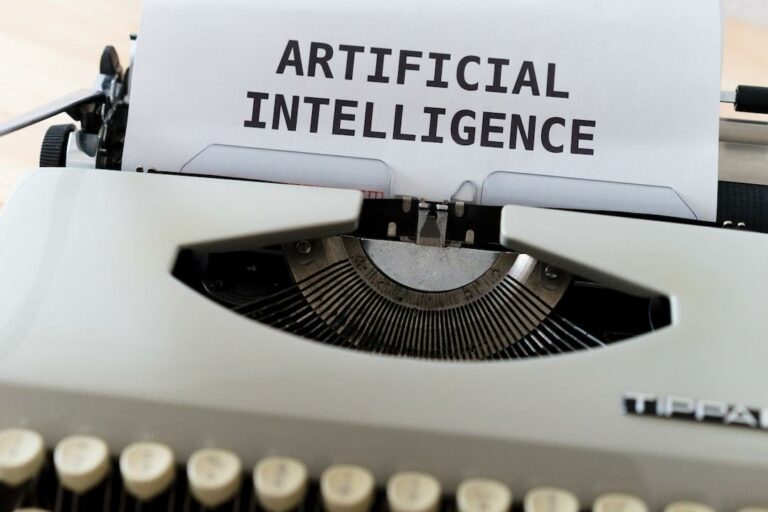Ever wonder how a modern AI like ChatGPT for residential care homes can redefine the experience of senior living? Just as an artist shapes clay into art, imagine if technology could shape our healthcare system to be more efficient and effective. We’re not just talking about making appointments or refilling prescriptions here – we’re diving deep into areas such as operational efficiency, medication management, patient care, staffing challenges and even social engagement.
This isn’t some far-off dream in a galaxy away; it’s happening right now. ChatGPT is helping us reimagine what’s possible in health care – from creating diverse meal plans that cater to residents’ dietary needs to identifying potential drug interactions with its vast knowledge base. It’s also enhancing patient monitoring by managing common conditions found among older adults while addressing staffing challenges using smart solutions. If you’ve been searching “ChatGPT for residential care homes” keep reading.
Surely there must be limitations though?
Table Of Contents:
- Leveraging ChatGPT for Operational Efficiency in Residential Care Homes
- The Role of ChatGPT in Medication Management
- Improving Patient Care with ChatGPT
- Addressing Staffing Challenges with ChatGPT
- The Limitations of Using ChatGPT in Residential Care Homes
- Social Engagement and Companionship through ChatGPT
- The Future of ChatGPT in Residential Care Homes
- FAQs in Relation to Chatgpt for Residential Care Homes
- Conclusion
Leveraging ChatGPT for Operational Efficiency in Residential Care Homes
As technology advances, so does the potential to improve operational efficiency in residential care homes. One such tool at our disposal is ChatGPT, a large language model developed by OpenAI that’s changing how we manage day-to-day tasks.
Streamlining Meal Planning with ChatGPT
Nutrition plays a crucial role in maintaining the health of residents. But let’s face it; planning diverse and nutritious meals daily can be challenging. This is where AI-powered tools like ChatGPT come into play.
The tool uses its natural language processing capabilities to assist staff members in creating varied meal plans that cater to individual dietary needs while adhering to clinical guidelines – all without skipping a beat on taste. ChatGPT offers a broad selection of recipes tailored to particular health conditions such as high blood pressure and diabetes.
Enhancing Activity Scheduling with AI
Social isolation among older adults residing in care homes is one of the biggest problems healthcare providers tackle today. To combat this, activities promoting physical health and social interaction are vital but scheduling these can often feel like solving complex puzzles.
Fear not because here too, ChatGPT proves itself as an invaluable tool. By considering each resident’s interests and abilities, it helps devise engaging activity schedules which promote social engagement – think virtual yoga classes or art therapy sessions.
A Step Towards Better Clinical Outcomes?
In addition to easing back-office workload for staff members through streamlining meal planning and activity scheduling procedures, recent studies suggest AI tools for electronic health management and patient monitoring have helped nursing home providers in dealing with increased administrative burdens and regulatory changes. So, not only does ChatGPT let us focus more on providing personalized care to our residents but it also contributes towards better clinical outcomes.
To sum up, leveraging the capabilities of AI tools like ChatGPT can bring about a revolution in operational efficiency within residential care homes. As we continue to explore its full potential, one thing is clear – the future of senior living seems brighter (and more efficient) already.
ChatGPT is transforming residential care homes, making meal planning and activity scheduling easier than ever. It’s not just about convenience though – this AI tool also helps provide personalized care to residents while keeping up with dietary guidelines and promoting social interaction. With ChatGPT, the future of senior living looks more efficient and brighter.
The Role of ChatGPT in Medication Management
ChatGPT, a product developed by OpenAI, is showing great potential as an AI-powered tool for healthcare professionals. It’s revolutionizing the way we manage medication to prevent errors and adverse drug reactions.
Preventing Drug Interactions with AI
This large language model uses its extensive knowledge base to identify possible drug interactions. With the ability to process vast amounts of information rapidly, it can flag contraindications and risk factors that humans might overlook.
A patient with elevated blood pressure requires new medications. ChatGPT could cross-reference their current prescriptions against potential new ones and highlight any dangerous combinations or side effects.
In one study published on NCBI, AI was shown to be capable of reducing medication errors by 50%. That’s not just impressive; it’s life-saving.
Aiding Decision Support in Healthcare
Beyond identifying risks, this digital health ally also supports decision-making processes. Using natural language processing capabilities combined with clinical guidelines provides evidence-based recommendations for healthcare providers.
This means better care for patients because they receive personalized treatment plans based on accurate data analysis rather than generalizations or educated guesses from overwhelmed staff members dealing with complex medical conditions.
Research published in JAMA Network suggests that using AI tools like ChatGPT could improve efficiencies in back-office work such as documentation review – giving clinicians more time for direct patient care.
Enhancing Remote Patient Monitoring
Moreover, ChatGPT can play a significant role in remote patient monitoring. By leveraging real-time health data and providing instant access to medical records, healthcare providers can remotely monitor patient conditions. This could be especially beneficial for older adults residing in residential care homes who need constant supervision but prefer the comfort of their own space.
We’re really focusing on this, you know.
ChatGPT is reshaping healthcare, especially in medication management. It identifies potential drug interactions and risk factors quickly, helping prevent errors and adverse reactions. But it doesn’t stop there – this AI tool also aids decision-making with evidence-based recommendations for personalized patient care. Plus, it’s a game-changer for remote patient monitoring in residential care homes.
Improving Patient Care with ChatGPT
The advent of AI-powered tools like ChatGPT for residential care homes is revolutionizing healthcare, bringing forth significant improvements in patient care. But how exactly does it achieve this? Let’s explore how AI is improving patient care.
Managing Common Health Conditions with AI
Nursing homes often grapple with managing common health conditions such as pressure ulcers, wound management, hypertension, and more. AI can revolutionize the way nursing homes handle common health conditions.
A report from Skilled Nursing News highlights that “AI is being used to manage common conditions”. So what role does ChatGPT play?
Fueled by machine learning and natural language processing capabilities, ChatGPT enables healthcare providers to monitor these health conditions closely while providing instant access to potential treatment options. This model, developed using large amounts of data, provides evidence-based recommendations tailored to each individual’s needs, which leads to improved clinical outcomes.
Digital Assistant for Decision Support
Beyond monitoring physical ailments such as high blood pressure or congestive heart failure (CHF), ChatGPT also plays a crucial role in decision support systems in healthcare settings.
This digital assistant processes complex medical information quickly, helping nurses make informed decisions on patient care plans, including medication adjustments or dietary changes necessary for diabetes patients based on real-time data analysis.
Mitigating Social Isolation through Engagement
In addition to their physical well-being, residents’ emotional health matters too. Especially considering social isolation among older adults residing in nursing homes can lead to severe mental stress.
ChatGPT serves as a virtual assistant, providing companionship and promoting social interaction among residents. It helps patients track their daily lives, engage in various activities, and even connects them to the world outside through social media channels, which can drastically improve their overall quality of life.
The Future Scope
Bringing AI tools like ChatG into the mix really amps up our game.
ChatGPT, an AI-powered tool, is a game-changer in residential care homes. It’s not just managing common health conditions effectively but also supporting decision-making processes for better patient care plans. More than that, it doubles as a digital companion to alleviate social isolation among residents and boost their overall quality of life.
Addressing Staffing Challenges with ChatGPT
The staffing crisis in nursing homes is a significant issue that has been exacerbated by the pandemic. But, there’s hope on the horizon thanks to AI staffing solutions like ChatGPT for residential care homes.
Staff shortages can lead to overworked employees and lower quality of care for residents. The good news? AI tools are starting to play a vital role in mitigating these challenges.
Flexible Scheduling with ChatGPT
Scheduling is one area where ChatGPT shines. It uses machine learning algorithms to create flexible schedules that meet both staff needs and ensure proper resident care.
This isn’t just about filling slots on a timetable. By analyzing data such as employee preferences, work hours regulations, and patient-to-staff ratios, it ensures optimal resource allocation.
Asbury Communities, an assisted living provider, utilized AI staffing solutions including pulse surveys and flexible scheduling – they managed not only to tackle their staffing issues but also significantly improve their operational efficiency.
Pulse Surveys: Aiding Employee Retention Efforts
Beyond scheduling tasks, ‘pulse surveys’, facilitated by AI systems like ChatGPT help address another major facet of this challenge – employee retention.
Pulse surveys offer quick insights into staff satisfaction levels; allowing administrators get ahead of any potential problems before they become full-blown crises leading personnel departures.
This use case highlights how implementing advanced technology aids us deal effectively even complex matters such as healthcare human resources management.
Nursing Homes & Future-Ready Technologies
While the application of AI in healthcare, particularly nursing homes is still evolving; it’s becoming evident that these tools have significant potential.
The role played by ChatGPT and similar systems isn’t meant to replace human workforce but rather complement their efforts. It helps create a work environment where staff can focus more on resident care – as opposed to grappling with administrative tasks.
Wrapping things up, making good use of tech is key.
AI staffing solutions like ChatGPT are tackling the nursing home staffing crisis by creating flexible schedules and aiding employee retention. By analyzing data, they ensure optimal resource allocation and staff satisfaction, allowing caregivers to focus more on resident care. These tools don’t replace humans but rather complement their efforts in an evolving healthcare landscape.
The Limitations of Using ChatGPT in Residential Care Homes
While ChatGPT for residential care homes offers numerous benefits, it’s crucial to understand its limitations. After all, no solution is perfect.
Accuracy Concerns with AI-generated Content
The first concern revolves around the accuracy and coherence of content generated by AI tools like ChatGPT. While impressive, these machines still lack the human touch necessary to guarantee flawless output.
In fact, according to a report by The New York Times – AI-Generated Fiction, AI-generated content can often produce work that lacks accuracy or coherence. So when using ChatGPT for residential care homes, you might need to implement measures such as secondary reviews from healthcare professionals or additional software checks to mitigate concerns related to inaccuracies in patient records and other vital data.
Data Security Risks
A second limitation lies within potential security risks associated with storing large amounts of sensitive health information on digital platforms powered by artificial intelligence. Though most providers offer robust protection systems, breaches do occur — highlighting the importance of maintaining strong cybersecurity protocols when implementing any form of technology into a senior living facility.
Lack Of Personal Touch
An equally important factor we cannot ignore is how an algorithm may fail at providing genuine social interaction required for residents battling loneliness or social isolation issues common amongst older adults in nursing homes. Herein lies one more reason why despite advancements like natural language processing capabilities offered through chat gpt solutions—human involvement remains irreplaceable within continuing care retirement communities.
Training And Adoption Challenges
Lastly, like any new technology, ChatGPT requires training and adoption. From understanding its functionalities to adjusting workflow accordingly—these changes may pose challenges for both staff members and residents initially. The key here is a thoughtful implementation strategy that prioritizes ongoing education and support.
To wrap things up, AI tools like ChatGPT can truly transform healthcare in residential care homes. But they’re not without their challenges that need tackling before we can fully weave them into the system. By understanding these hurdles and crafting plans to overcome them,
ChatGPT brings a ton of perks to residential care homes, but it’s not all smooth sailing. We’ve got to tackle issues like ensuring the AI-generated content makes sense and is accurate, safeguarding data security, maintaining that personal touch for residents who crave social interaction, and smoothing out any training or adoption bumps in the road. But don’t worry – with some solid planning and help on hand, we’re well on our way to seamlessly integrating this tech.
Social Engagement and Companionship through ChatGPT
ChatGPT, an advanced AI model developed by OpenAI, is playing a vital role in promoting social engagement and companionship among older adults. With its large language processing capabilities, it’s able to stimulate conversation and give human-like responses.
This technology has great potential for residential care homes where many residents suffer from social isolation. By connecting them with virtual assistants like Alexa or Google Home that are powered by ChatGPT AI, they can have instant access to someone who will always be there to chat.
The natural language processing feature of these digital health tools lets users communicate as if they’re talking with another person. This helps combat loneliness while also providing cognitive stimulation that keeps their minds active.
Promoting Social Interaction with ChatGPT
In addition to one-on-one interactions via virtual assistants, ChatGPT also supports connection on a wider scale using social media platforms such as Facebook or Twitter. Here too the goal is promoting interaction amongst seniors which leads to improved public health outcomes overall. Research shows strong links between regular communication activities and enhanced mental well-being among older adults.
It’s not just about casual conversations either; patients can ask complex medical questions related directly to their conditions – say high blood pressure or heart failure – and get answers based on clinical guidelines thanks largely due to the AI’s machine learning abilities.
Fostering Companionship with Virtual Assistants Powered by ChatGPT
Apart from answering questions concerning healthcare providers’ advice or decision support regarding drug interactions, for instance, even simpler tasks like reminding them when it’s time for their medication or daily life activities are within the wide range of AI-powered tools.
With natural language processing capabilities, these virtual assistants can also help patients track health parameters such as blood pressure and provide instant feedback. In this way, they’re revolutionizing healthcare by becoming a valuable tool in remote patient monitoring.
ChatGPT, an AI model by OpenAI, is a game-changer in combating social isolation among seniors in residential care homes. It powers virtual assistants and fosters companionship with human-like chats. More than just casual talks, it can handle complex health-related questions and track daily life activities or medication times – becoming an indispensable tool for remote patient monitoring.
The Future of ChatGPT in Residential Care Homes
As we look towards the future, AI-powered tools like ChatGPT are poised to revolutionize healthcare in residential care homes. This large language model developed by OpenAI is more than just a chatbot—it’s an intelligent assistant that can help with tasks ranging from meal planning and activity scheduling to medication management.
With its natural language processing capabilities, ChatGPT has great potential as a virtual assistant for both residents and staff. It can give instant access to patient records or offer evidence-based recommendations based on clinical guidelines—a valuable tool indeed for decision support.
Aiding Healthcare Providers
Healthcare providers commonly manage intricate medical issues, like hypertension or cardiac illness in elderly folks in nursing facilities. The ability of AI tools like ChatGPT to analyze large amounts of data quickly makes them useful in providing clinical decision support.
This could be particularly beneficial when managing potential drug interactions, ensuring patients receive care safely and efficiently. However, it’s not all about the back-office work—ChatGPT also offers promise for enhancing daily lives within these communities.
Promoting Social Interaction & Reducing Isolation
Social isolation is one of the biggest problems facing seniors today but technologies such as virtual assistants can provide companionship and stimulate social interaction among residents. With their human-like responses, they may even play a part in reducing feelings of loneliness—an important public health issue that needs addressing urgently.
In this digital age where social media platforms are ubiquitous, using technology like ChatGPT could encourage older adults to engage more online thereby fostering connections with loved ones outside the facility while improving their digital health literacy.
Addressing Staffing Challenges
The integration of AI tools in residential care homes can also improve efficiencies and address staffing challenges. ChatGPT, with its language processing capabilities, could help create flexible schedules or streamline administrative tasks, allowing staff more time to focus on the well-being of residents.
ChatGPT, a powerful language model, is shaking things up in healthcare for seniors. The future’s arrived and it’s being molded by AI – with the promise of improved patient monitoring.
Imagine AI tools like ChatGPT revolutionizing healthcare in residential care homes. It’s not just managing medical conditions or drug interactions, but also fostering social interaction among seniors. This smart assistant is all set to enhance patient care and boost staff efficiency. And hey, it’s more than a chatbot – consider it as your fresh team member eager to tackle tasks even as specific as meal planning.
FAQs in Relation to Chatgpt for Residential Care Homes
What is ChatGPT for senior living?
ChatGPT for senior living is an AI tool that supports healthcare tasks, streamlines operations, and boosts social engagement in residential care homes.
How is AI used in nursing homes?
In nursing homes, AI like ChatGPT helps with medication management, activity scheduling, meal planning, and patient monitoring to enhance patient care.
What is an example of residential care?
An example of residential care includes long-term facilities such as nursing homes where elderly or disabled individuals receive 24/7 professional assistance.
How AI is changing the future of nursing?
AI reshapes the future of nursing by aiding with diagnostics, medication management, personalized treatment plans, and addressing staffing challenges. It’s making healthcare more efficient and accurate.
Conclusion
Transforming health care is no small task. But with chatgpt for residential care homes, it’s becoming a reality.
This AI tool isn’t just streamlining back-office work; it’s revolutionizing how we approach meal planning, activity scheduling and even medication management in senior living facilities.
We’re seeing an era where potential drug interactions are identified before they cause harm, and common conditions like high blood pressure or diabetes are managed effectively using digital health solutions. It’s not without challenges though – accuracy of generated content remains a concern that needs addressing.
The biggest wins? They’re happening on the social front: stimulating engagement among older adults, combating social isolation and fostering companionship in ways never imagined before!







